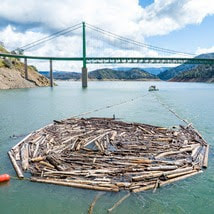 A Year in Review The arrival of 2023 ushered in continued heavy rain and snowfall throughout California including in the Northern Sierra and Feather River Watershed that feed Lake Oroville. Between December 2022 and mid-January 2023, Lake Oroville experienced a 100-foot rise in elevation, marking the start of a significant turnaround in water storage at the State Water Project’s (SWP) largest facility following several years of drought. Quickly rising water levels at the beginning of the year also initiated a huge driftwood removal endeavor for DWR’s civil maintenance crews. Beginning in January, Oroville Field Division’s civil maintenance crews spent four months corralling acres of floating driftwood at Lake Oroville. Due to the large influx in debris, maintenance staff and boats were pulled from Southern and San Joaquin Field Divisions and the Sutter and Sacramento Flood yards to assist with driftwood collection. In total, civil maintenance crews collected over 5,400 cubic yards of driftwood to ensure continued infrastructure operations and the safety of the recreating public on Lake Oroville. 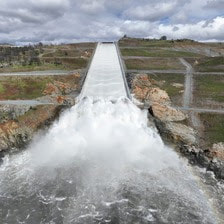 In early March, water levels brought the Loafer Point Stage I boat ramp into service for the first time since its construction in 2020. Open for water elevations above 805 feet, Loafer Point Stage I offers three boat launch lanes, a boarding dock, a lighted parking area for vehicles and boat trailers, and a restroom facility. This facility along with the adjacent lower Stage II boat ramp are a perfect complement to the Loafer Creek Recreation Area, providing access to many trails, campgrounds, a swimming beach, and the nearby Bidwell Canyon Marina and store. On March 10, rising reservoir levels and flood control manual requirements prompted DWR to release water from Oroville Dam’s main spillway for the first time since 2019. By June, melting snowpack and water runoff into Lake Oroville had filled the reservoir to 100 percent capacity. Over the course of the spring and summer seasons, DWR released over 2,370,000 acre-feet of water from the main spillway, approximately 67 percent of Lake Oroville’s capacity. Construction continued on the River Valve Outlet System (RVOS) at Oroville Dam. The system is a series of two parallel outlet conduits, each with two valves, that have the capacity to draw water from deep in Lake Oroville for release. The RVOS is a critical feature of the dam, providing the ability to discharge cold water to support Feather River temperatures necessary for fish health. It also ensures the ability to maintain Feather River flows through RVOS releases during drought years, especially if reservoir levels drop below Hyatt Powerplant’s water intake structures. 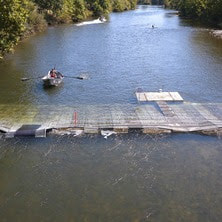 Around the end of July, DWR completed installation of a fish monitoring station in the Feather River about five miles downstream of Oroville. The fish monitoring structure guides fish past an underwater video camera, allowing biologists to review footage and determine abundance, run timing, and origin (hatchery or natural) of steelhead and Chinook salmon populations. This information will improve management of these important fish populations in the Feather River and at the Feather River Fish Hatchery. At the end of August, DWR also completed construction on a salmonid habitat improvement project in the Feather River near the Feather River Fish Hatchery and Bedrock Park in Oroville. The project placed approximately 9,000 cubic yards of gravel at multiple locations to improve existing spawning habitat sites. Salmonid access to existing river side channels was also improved by excavating and redistributing accumulated streambed material. High levels of in-river spawning were seen this fall in project areas. Between mid-September and early December, DWR performed routine concrete and slab and wall joint sealant repair work on localized areas of Oroville Dam’s main spillway identified during annual inspections. While the main spillway continues to perform well and operate as designed, periodic concrete and sealant repairs of the spillway are expected due to seasonal temperature variations, spillway releases, and sun exposure. In addition, inspections of the 51,000 feet of piping that supports the spillway’s improved drainage system were completed this season. 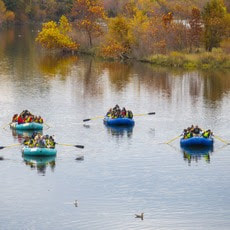 This fall, DWR partnered with Friends of Butte Creek and the Oroville Chamber of Commerce to offer educational Floating Classroom tours on the Feather River. Rafting trips floated through Feather River spawning habitat while DWR scientists provided information on Chinook salmon conservation efforts, ongoing and planned research, and restoration and monitoring projects. Profits from weekend public tours were used to provide free floating classroom experiences to 15 classes from nine local schools during the peak salmon spawning season. DWR was also awarded Hazard Mitigation Grant Program (HMGP) funds totaling $900,000 from the Federal Emergency Management Agency (FEMA) to complete a 305-acre hazardous fuels reduction project in the Lake Oroville area. This multi-year project reduces the risk of a catastrophic wildfire by improving defensible space around infrastructure, roads, and residential areas, with work performed in conjunction with Oroville Field Division’s ongoing Fuel Load Management Plan. 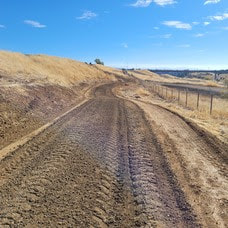 Construction work on a 1.5-mile section of the Brad Freeman Trail between Cherokee Road and the Highway 70 Garden Drive overpass began in October. Planned improvements include upgrading the existing gravel/dirt trail to include an 8-foot-wide asphalt path for cyclists and a 4-foot-wide decomposed granite path for pedestrians. Existing entrance bollards will also be replaced with wider, accessible box gates. The improvement project is supported by a Land and Water Conservation Fund grant through the National Park Service, with remaining funding for the $700,000 project provided by DWR. Project completion is expected in June 2025. DWR and the California Department of Fish and Wildlife (CDFW) completed spawning activities this fall for spring, inland, and fall-run Chinook salmon at the Feather River Fish Hatchery in Oroville. The Hatchery collected enough eggs to meet its production goals and anticipates meeting target release numbers of 2 million spring-run, 125,000 inland Chinook destined for Lake Oroville, and 6 million fall-run, with an additional 3.5 million fall-run to be released to mitigate declines in Chinook salmon populations during recent drought years. Chinook salmon fingerlings raised at the Hatchery will later be released in the Feather River and San Francisco Bays to support inland and ocean fisheries. The Feather River Fish Hatchery is a California SWP facility owned and maintained by DWR, which funds hatchery operations. CDFW operates the hatchery, including fish spawning, rearing, and stocking activities. DWR looks forward to initiating and completing more projects in 2024 at the Oroville-Thermalito Complex. The Lake Oroville Community Update will continue to share news and information with the community. OROVILLE RECREATION The Lake Oroville Visitor Center will close at 1 p.m. Sunday, Dec. 24 and close all day for the Christmas and New Year holidays. Visitors may still access nearby trails during the holiday closures. Open seven days a week from 9 a.m. to 5 p.m., the Visitor Center features interpretive displays on Oroville Dam, area geology, wildlife and habitat, hydroelectric power, and cultural and historical artifacts. View videos in the theater about the construction of Oroville Dam, walk or hike along nearby trails, and visit the 47-foot-tall observation tower that provides unsurpassed panoramic views of surrounding areas. Free guided tours for school and community groups are available by reservation. Parking and admission to the Visitor Center are free. The Spillway Day Use Area and Boat Ramp will be open from 6 a.m. to 6 p.m. on Christmas Eve and Christmas Day. Daily winter hours for the Spillway Day Use Area are currently 6 a.m. to 8 p.m. through April 30, 2024. DWR, the California Department of Parks and Recreation, and CDFW maintain over 92 miles of trails in the Oroville area. An interactive map of recreation facilities, including open trails and their permitted uses (hike, bike, horse, multi), is available on DWR’s Lake Oroville Recreation webpage. A paper trail map is available at various locations, including most entrance kiosks and the Lake Oroville Visitor Center. The marinas at Bidwell Canyon and Lime Saddle are open daily and provide a variety of services including a convenience store, gas, and boat rentals. Upstream migrating fish totals between Sept. 11 and Dec. 13 are:
CURRENT LAKE OPERATIONS Lake Oroville is at 815 feet elevation and storage is approximately 2.37 million acre-feet (MAF), which is 67 percent of its total capacity and 130 percent of the historical average. Feather River flows remain at 650 cubic feet per second (cfs) through the City of Oroville with 1,100 cfs being released from the Thermalito Afterbay River Outlet (Outlet) for a total Feather River release of 1,750 cfs downstream. DWR continues to assess releases to the Feather River daily. With rising water levels from recent storms, water may be seen on the main spillway outlet as the seals on the eight radial gates are not designed to be watertight. The gate seals do not play a role in the structural integrity of the gates, which continue to operate as intended. DWR periodically maintains and adjusts the seals during low-reservoir conditions to improve their sealing capability. Visitors to Oroville Dam may also notice minor amounts of water flowing from drains built into the emergency spillway, which is normal and expected with the emergency spillway design. The dam and emergency spillway continue to operate as intended. The public can track precipitation, snow, reservoir levels, and more at the California Data Exchange Center. The Lake Oroville gage station is identified as “ORO.” All data as of midnight 12/21/2023. DWR wishes everyone a happy holiday season. The Lake Oroville Community Update will return on January 5, 2024 Comments are closed.
|
Archives
May 2024
Categories
All
|
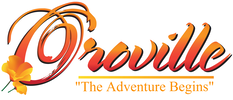
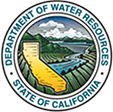
 RSS Feed
RSS Feed